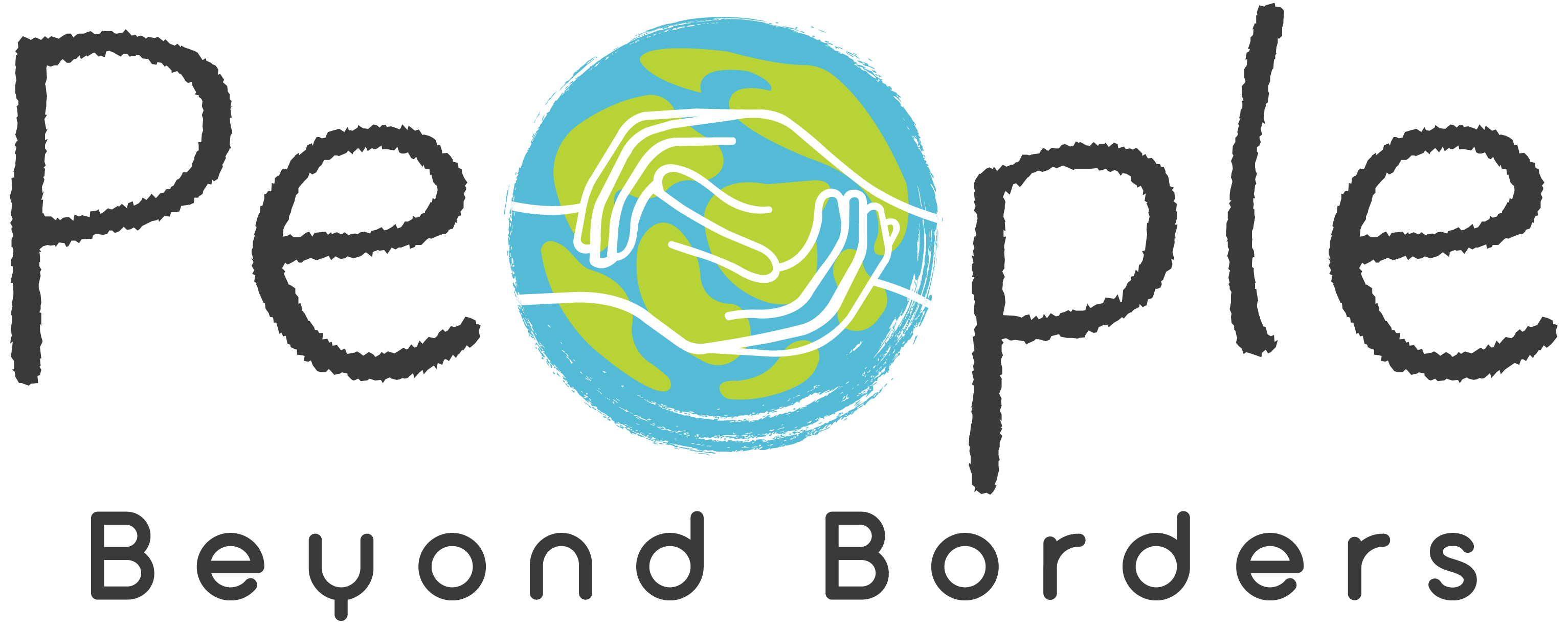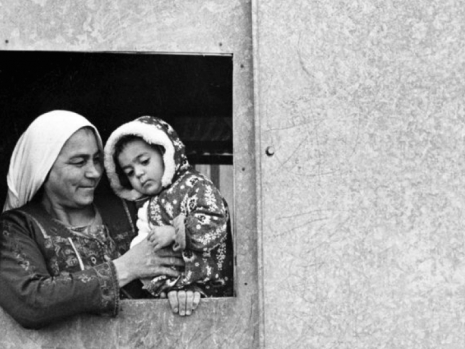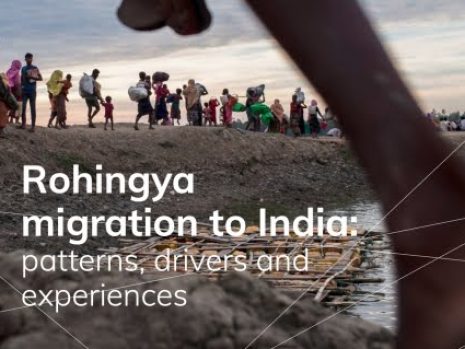Acknowledging the widespread reality of ‘overlapping’ displacement provides an entry point to recognising and engaging with the agency of refugees and their diverse hosts in providing support and welcome to displaced people.
It is often taken for granted that local communities hosting refugees are composed of settled and established groups of citizens. However, newly displaced populations not only share spaces with or aim to integrate into communities of ‘nationals’ but also into communities formed by established or former refugees and IDPs, whether of similar or different nationality/ethnic groups.[1] This is especially the case given three key trends in displacement: the increasingly protracted nature of displacement, the urban nature of displacement and the overlapping nature of displacement.
While a great deal of academic and policy attention has been given to the first two, very little research has been conducted into the nature and implications of ‘overlapping’ displacements, including with regard to local communities. I use this term to refer to two forms of ‘overlap’. Firstly, refugees and IDPs have often both personally and collectively experienced secondary and tertiary displacement. This is the case of those Sahrawi and Palestinian refugees who left their refugee camp homes in Algeria and Lebanon to study or work in Libya before being displaced by the outbreak of conflict there in 2011, and of Palestinian and Iraqi refugees who had originally sought safety in Syria only to be displaced once more by the conflict there.[2] Secondly, refugees are increasingly experiencing overlapping displacement in the sense that they often physically share spaces with other displaced people. For example, Turkey hosts refugees from over 35 countries of origin, Lebanon from 17 countries, Kenya 16, Jordan 14, Chad 12 and both Ethiopia and Pakistan 11.[3] Given the protracted nature of displacement, over time these refugee groups often become members of communities which subsequently welcome and offer protection and support to other groups of displaced people.
Reviewing common approaches to hosts and integration
The focus on ‘local host communities’ and the ‘national population’ is understandable on policy (and political) levels in contexts of protracted urban displacement. This is especially the case since integration is recognised to be a two-way process: it depends not only on the actions and attitudes of the incoming population but also on the “readiness on the part of the receiving communities and public institutions to welcome refugees and meet the needs of a diverse community”.[4]
Reflecting this, most integration tools and indices of integration focus on the characteristics, experiences and integration outcomes of displaced people, which are then compared with the experiences and outcomes of national host populations. In addition to providing the framework to examine the similarity/difference between refugees’ and hosts’ socio-economic situations, diverse policy tools prioritise the importance of local host perceptions of their own and refugees’ situations in the hosting environment and host country. In the context of the Syrian refugee crisis, for instance, an increasing number of baseline attitudinal studies are underway in Lebanon, Jordan and Turkey. One objective of these is to identify communities where policy interventions are needed to defuse tensions between hosts and refugees as they compete (or perceive inequalities) over scarce resources and services, and to develop programmes to promote social cohesion between hosts and refugees.
Hybrid hosts
The overlapping nature of displacement leads to a blurring of the categories of ‘displaced person’ and ‘host’. In the context of northern Uganda, for example, host populations live in the same camps as IDPs, may also have limited access to land, and are generally considered to be IDPs – or indeed ‘IDP-hosts’ – and the distinction between displaced population and host population may be unclear in many other situations around the world. Also in the border region between South Sudan and northern Uganda, communities which had once hosted IDPs and refugees have themselves been displaced and are being hosted by others. In other situations the displaced then become hosts to newly displaced people.
The ongoing cycles of displacement and multi-directionality of movement create a methodological challenge for any estimations of the impact of displacement on local communities, as it is likely that the meaning of ‘host population’ will differ in every displacement context. This also raises questions about the extent to which policymakers and practitioners are aware of, or aim to address, the impacts that newly arrived refugee groups have on established refugee communities, whose protracted presence in urban spaces in particular may have rendered them invisible (or less significant) to donors and humanitarian agendas. Indeed, this highlights the need for strategies that can support newly displaced refugee groups while remaining sensitive to the socio-economic conditions of ‘national’ host communities; such strategies also need to avoid marginalising or compounding the existing social exclusion of established refugee-host communities.
Refugee-hosts
Refugee-led initiatives developed in response to existing and new refugee situations directly challenge widely held (although equally widely contested) assumptions that refugees are passive victims in need of care from outsiders. My ongoing research in North Lebanon examines encounters between established Palestinian refugees who have lived in an urban Palestinian refugee camp on the outskirts of the Lebanese city of Tripoli since the 1950s (Baddawi camp) and increasing numbers of new refugees arriving from Syria since 2011. These include not only Syrian refugees but also Palestinian and Iraqi refugees who had been living in Syria at the outbreak of the conflict and who have found themselves refugees once more. Palestinians are now active providers of support to others, rather than merely aid recipients themselves, reflecting the extent to which urban camps can become shared spaces.
This is not the first time that Baddawi camp and its refugee inhabitants have welcomed ‘new’ refugees. Baddawi camp residents also hosted over 15,000 ‘new’ Palestinian refugees who were internally displaced from nearby Nahr el-Bared refugee camp when that camp was destroyed during fighting in 2007. With an estimated 10,000 refugees from Nahr el-Bared still residing in Baddawi camp, these ‘internally-displaced-refugees-hosted-by-refugees’ have in turn become part of the established community in Baddawi hosting ‘newly’ displaced refugees from Syria.
On one hand, arriving in the camp – whether Baddawi or other Palestinian camps in Lebanon – and sharing its increasingly cramped space and limited resources has offered refugees from Syria an opportunity to form part of the broader ‘refugee nation’, a space of solidarity in which refugees from Syria can be with other refugees. On the other hand, however, not all refugees in Baddawi are viewed equally, nor have they been equally welcomed, or had equal access to space and spaces, services and resources.
Indeed, while highlighting the relational nature of refugeedom, and destabilising the assumption that refugees are always hosted by citizens, the encounters characterising refugee-refugee hosting are not to be idealised, since they are also often framed by power imbalances and processes of exclusion and overt hostility by the members of the original refugee community towards new arrivals. Rather than viewing these tensions as inevitable, it is clear that certain policies and programmes activate resentment and insecurity among hosts, and there is therefore an increasing commitment to implementing development-oriented programmes that aim to support both refugees and host communities. In the context of overlapping displacement and refugees-hosting-refugees, these tensions may be the result of the uneven development of programmes for different ‘generations’ of refugees and for refugees according to their country of origin. This is particularly visible in Baddawi camp, whose established inhabitants have received limited assistance from UNRWA[5] since the 1950s while new arrivals from Syria receive support from an expanding range of international and national organisations.
The challenge that remains is for researchers, policymakers and practitioners to actively explore the potential to support the development, and maintenance, of welcoming communities, whether these communities are composed of citizens, new refugees or established refugees. Acknowledging the widespread reality of overlapping displacement provides an entry point to recognising and meaningfully engaging with the agency of refugees and their diverse hosts in providing support and welcome as active partners in processes of integration, while also recognising the challenges that characterise such encounters. At a minimum, new programmes and policies must avoid re-marginalising established refugee communities which are hosting newly displaced people; at best, they can be sensitive to supporting the needs and rights of all refugees, whether they are hosting or being hosted.
[1] See Fiddian-Qasmiyeh E (2015) ‘Refugees helping refugees: how a Palestinian refugee camp in Lebanon is welcoming Syrians’, The Conversation, 4 November 2015 http://theconversation.com/refugees-helping-refugees-how-a-palestinian-camp-in-lebanon-is-welcoming-syrians-48056; Fiddian-Qasmiyeh E and Qasmiyeh Y M (2016) ‘Refugee Neighbours and Hostipitality: Exploring the complexities of refugee-refugee humanitarianism’, The Critique, 5 January 2016 www.thecritique.com/articles/refugee-neighbours-hostipitality-2/
[2] Fiddian-Qasmiyeh E (2012) ‘Invisible Refugees and/or Overlapping Refugeedom? Protecting Sahrawis and Palestinians Displaced by the 2011 Libyan Uprising’, International Journal of Refugee Law 24(2):263-293 http://ijrl.oxfordjournals.org/content/24/2/263.full
[3] Figures from Crawford N et al (2015) Protracted displacement: uncertain paths to self-reliance in exile, London: ODI/HPG. www.odi.org/sites/odi.org.uk/files/odi-assets/publications-opinion-files/9851.pdf
[4] UNHCR (2005) Local Integration and Self-Reliance, EC/55/SC/CRP.15 www.refworld.org/docid/478b3ce12.html
[5] United Nations Relief and Works Agency for Palestine Refugees in the Near East



